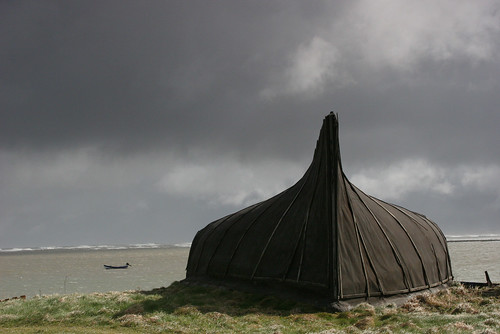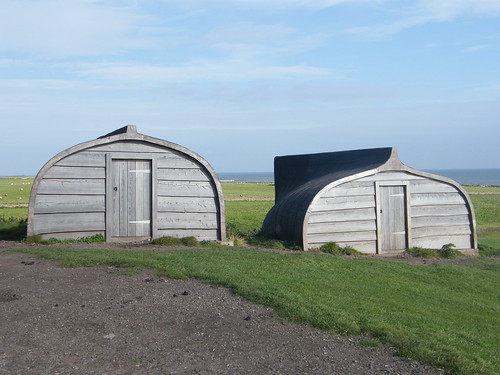Adventure is an element in American artist-life that gives it singular zest and interest. From Audubon’s lonely forest wanderings and vigils, to Church’s pilgrimage among the Andes, or Bradford’s chase after icebergs off the coast of Labrador, its record abounds with pioneer enterprise and hardy exploration. A few years ago the idea of a carefully studied, faithfully composed, and admirably executed landscape of Rocky Mountain scenery would have been deemed chimerical, involving, as it must, long and isolated journeys, and no ordinary risk and privation….We look at the result but scarcely realize the process.
—Henry Tuckerman, Book of the Artists, 1866 |
|
 |  |  | Charles Bird King (American, 1785–1862), Young Omahaw, War Eagle, Little Missouri, and Pawnees, 1821. Oil, 36 1/8 x 28 inches. ©Smithsonian American Art Museum; photograph courtesy of The Huntington Library, Art Collections, and Botanical Gardens.
| Some artist-explorers are inspired by the concept of the unknown, by the notion of painting undocumented territory. Others may simply desire to illustrate strange and new surroundings or be commissioned to record an expedition. They might not consider themselves explorers; their mission may be science, enterprise, or art.
In the nineteenth century, English artists fanned out into the extensive British Empire, painting its exotic reaches and beyond. Botanical illustrators such as Marianne North (1830–1890) documented the flora and fauna of newly discovered places including remote parts of South Africa. The impetus for North’s work was her love of both botany and art; she was fortunate to have not only the financial means to travel extensively, but also the courage to venture into wild places. She donated 832 oil paintings to Kew Gardens in London, where people continue to enjoy and study her renderings of plants in their natural settings. Many other artist-naturalists produced prints of their work for mass distribution.
|
 |  |  | Thomas Moran (American, 1837–1926), Cliffs of the Upper Colorado River, Wyoming Territory, 1882. Oil, 16 x 24 inches. ©Smithsonian American Art Museum; photograph courtesy of The Huntington Library, Art Collections, and Botanical Gardens. In 1869, with the near completion of the transcontinental railroad, a young Thomas Moran eagerly traveled west to establish himself as a painter of the frontier. His Wyoming, Yellowstone, and Yosemite landscapes are now easily identifiable, but at the time were presenting new national imagery.
|  |  | Albert Bierstadt (German-American, 1830–1902), Mt. Baker, Washington, from the Frazier River, ca. 1889. Oil, 14 x 20 inches. The Brooklyn Museum, 47.196; photograph courtesy of Montclair Art Museum.
| The Arctic and Americas also provided fresh subject matter for artists eager to find previously unrecorded landscapes and species. The Western frontier of North America was still a largely uncharted region in the early nineteenth century. Some of the first to paint the West and its inhabitants included John James Audubon, Karl Bodmer, George Catlin, and A.J. Miller—artists on scientific and expeditionary sojourns.
Highlighted here are works of art from current museum exhibitions that focus on Western artist-explorers. Also featured are paintings in this genre on the market. In an article elsewhere in this issue, read about the frontier adventures of painter A.J. Miller.
Suggested reading:
Kenneth Haltman, Figures in a Western Landscape: Expeditionary Art and Science in the Early Republic (Princeton University Press, forthcoming).
Eleanor Jones Harvey, The Painted Sketch, American Impressions from Nature, 1830–1880 (Dallas Museum of Art and New York: Harry N. Abrams, Inc., 1998).
Harold McCracken, George Catlin and the Old Frontier (New York: Crown Publishers, 1959).
J. Gray Sweeney, Masterpieces of Western American Art (New York: M & M Books, 1991).
|
 |  |  | Peter Rindisbacher (American, 1806–1834), A Gentleman Travelling, ca. 1826. Lithograph (before conservation), 7 5/8 x 11 1/2 inches. Courtesy of Amon Carter Museum. A very early scene near Hudson Bay, Canada.
| Lure of the West, a traveling exhibition from the Smithsonian, encompasses more than a century of art, moving from the excitement of early exploration to the establishment of the national mythology about the West. On view through December 16, 2001, at The Huntington Library, San Marino, California, the exhibition travels to several other venues throughout 2002. For more information, visit The Huntington’s Web site, www.huntington.org, or call 626.405.2100.
The earliest work in the exhibition is a group portrait of five Indians by Charles Bird King. Painted in the artist’s Washington, D.C., studio in 1821, the delegation of Indians had traveled east to negotiate territory rights on behalf of their tribe. Wearing wampum ornaments, red face paint, bead necklaces, and fur robes, the figures appear as noble representatives of a sovereign nation; one proudly wears a “peace medal” depicting President James Monroe.
|
 |  |  | John Mix Stanley (American, 1814–1872), Camp of the Red River Hunters, 1857. Oil on canvas, 13 3/4 x 21 1/8 inches. Courtesy of Amon Carter Museum. John Mix Stanley chronicled Indian customs and portraits in 150 paintings that he subsequently deposited at the Smithsonian in 1851, in the hope that they would be purchased by the U.S. government. Sadly, most of his lifework was destroyed in 1865 when the Smithsonian Castle Building went up in flames.
| In 1859, when Albert Bierstadt embarked on a surveying expedition with Colonel Frederick V. Lander, the West was still viewed as a new and untamed region. The artist had to obtain permission from the War Office in Washington in order to join the official expedition. Already one of the country’s top landscape painters, Bierstadt received extensive press coverage prior to and during his journey with his published firsthand accounts of the strange land. His oil sketches of the terrain and unfamiliar creatures such as buffalo were later used for romantic and monumental finished canvases. On a subsequent trip out West, Bierstadt employed a professional writer to pen dramatic “letters from the field” of the artists’ adventures.
|
 |  |  | George Caleb Bingham (American, 1811–1879), View of Pike’s Peak, 1872. Oil on canvas, 28 1/8 x 42 1/4 inches. Courtesy of Amon Carter Museum.
| Bierstadt’s work from the 1859 trip to the “closing of the frontier” in the 1890s are on view in Primal Visions: Albert Bierstadt “Discovers” America through February 3, 2002, in the newly built exhibition galleries at the Montclair Art Museum. Two rarely exhibited works, Autumn in the Sierras (Kings River Canyon, 1873) and The Landing of Columbus (1892), are on loan from the City of Plainfield, New Jersey. Montclair, New Jersey. Tel. 973.746.5555; www.montclairartmuseum.org.
The Artist and the American West: A Century of Western Art, on view through May 26, 2002, at the Amon Carter Museum, presents ninety paintings of the North American frontier. Fort Worth, Texas. Tel. 817.738.1933; www.cartermuseum.org.
|
 |  |  | Charles Blomfield (New Zealander, d. 1926), The Pink Terrace. Oil on canvas, 18 x 24 inches. Courtesy of Brock & Co.
| Charles Blomfield is known as the painter of the Pink and White Terraces of New Zealand’s thermal region, the extraordinary formations of siliceous rock once hailed as the Eighth Wonder of the World. The destruction of these terraces in the 1886 eruption of nearby Mount Tarawera led to a sudden rise in demand for depictions of the spot. Blomfield’s terrace paintings shot to instant fame. His technique of making sketches and painting studies from many different angles and in various light for use in later copies meant that for years after the eruption Blomfield could depend on selling terrace paintings for a modest income.
Although the Pink and White Terraces proved to be Blomfield’s signature subject, they were by no means his only ones. A prolific painter, Blomfield exhibited regularly from 1862 to 1926. He was an intrepid traveler who explored uncharted areas of New Zealand and Australia for new and exciting subject matter. “A waterfall on the Mangawhero, unvisited and almost unknown,” he once wrote, “virgin ground to the artist and photographer! This was quite enough to induce me to start on a sketching tour up the Mangawhero.” Blomfield negotiated treacherous terrain for scenes that inspired him. If his destination required a journey too difficult to allow him to bring large canvases, he would make sketches and watercolors and then create the paintings later in his studio. Blomfield held exhibitions as he traveled, often earning just enough to support his family in Auckland and pay for his trip.
|
 |  |  | Albert Bierstadt (American, 1830–1902), Mariposa Indian Encampment, 1872. Oil on paper, 16 x 22 inches. Signed lower right: A. Bierstadt. Courtesy of Zaplin-Lampert Gallery.
| The most notable characteristic of Blomfield’s lifework is his highly developed aesthetic sense—apparent from his paintings, writings, and the way he lived his life. He depicted landscapes in all seasons and conditions; a contemporary critic commented, “Mr. Blomfield is evidently in love with Nature in all her moods.” His efforts to faithfully portray nature can also be found in his letters to his wife, Ellen, and in the many articles he wrote for local newspapers. He would describe his impressions of nature with enthusiasm and detail, taking as many pains with his pen as he did with his brush. In his writings, Blomfield also reveals himself to be one of New Zealand’s first conservationists, showing an advanced awareness of the threat civilization was imposing on the previously untouched landscape.
|
 |  |  | William Bradford (American, 1823–1892), A Calm Afternoon, the Coast of Labrador, 1875. Oil on canvas, 20 x 30 inches. Signed lower right: Wm Bradford 75. Courtesy of Vose Galleries of Boston.
| William Bradford started off in the family business, a dry goods and ship outfitters store in the port city of New Bedford, Massachusetts. However, his attention shifted toward sketching and painting sea merchants and whaling ships.
In 1861 Bradford ventured to Labrador, where he became fascinated with the light effects of the Arctic sun on the frozen land and sea. The artist made numerous voyages to the Arctic Circle, painting ships sailing through the treacherous waters and bound in ice. He then formed a friendship with art dealer Seth Vose, through whom he sold much of his work.
In 1868 Henry Raschen emigrated with his family from Germany to Fort Ross, California. The family eventually settled in San Francisco, where Raschen studied under painters Charles Nahl and Virgil Williams. He became one of the first California artists to commit to Indian themes.
During an expedition with Army General Nelson A. Miles, Raschen experienced the capture of Apache Chief Geronimo, whom he later sketched in prison.
|
 |  |  |  | Henry Raschen (German-American, 1854–1937), The Sentry. Oil on canvas, 30 x 40 inches. Courtesy of Vose Galleries of Boston.
|
| Henry Raschen (German-American, 1854–1937), Apache Chief—Geronimo. Oil on canvas, 24 x 36 inches. Courtesy of Vose Galleries of Boston.
| |
References:
Mary Jean Blasdale, Artists of New Bedford: A Biographical Dictionary (New Bedford, MA: Old Dartmouth Historical Society, 1990).
William Bradford, The Arctic Regions (London: Sampson, Marston, Low and Sampson, 1873).
John Wilmerding, William Bradford, 1823–1892 (Lincoln, MA: De Cordova Museum, 1969) |





































